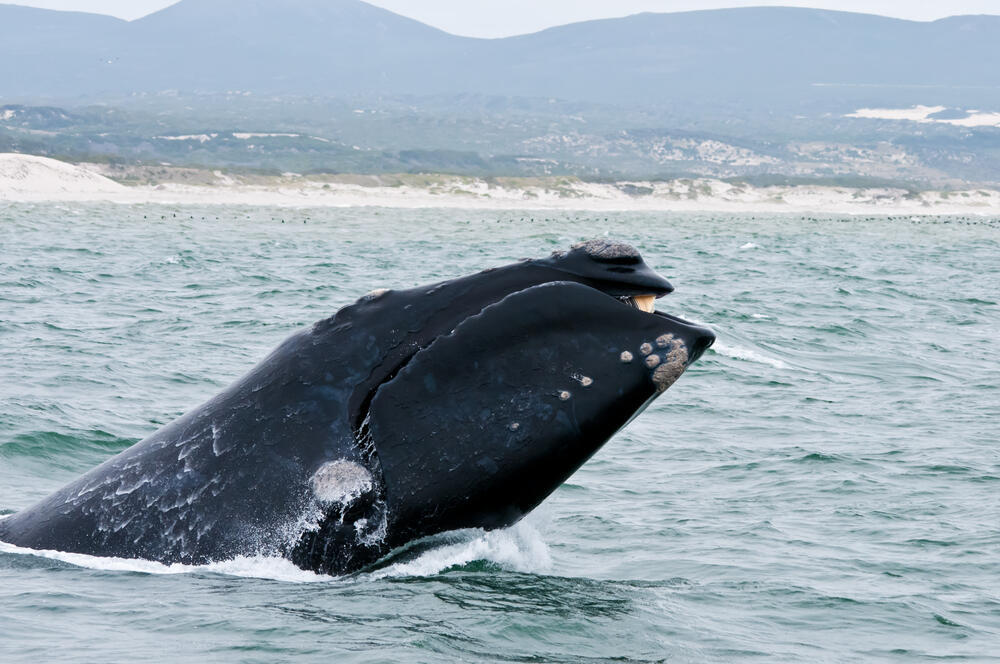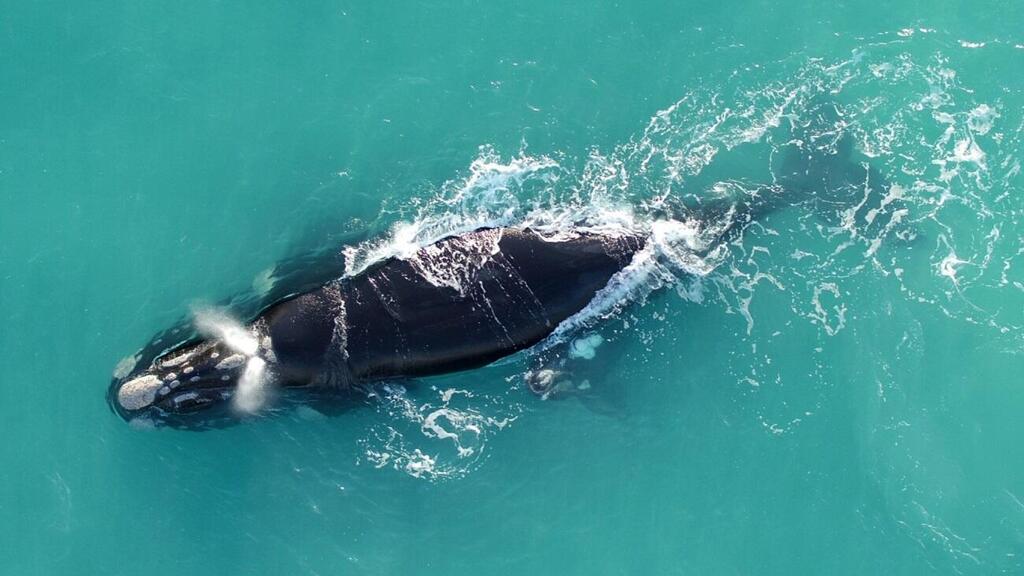During the winter months in the Southern Hemisphere, when the waters around Antarctica freeze, a whale species known as Eubalaena australis migrate northward. They gather in the bay near the South African town of Hermanos, where warmer waters provide an ideal environment for mating and nurturing their newborn cubs.
However, food sources are scarce, leading female southern right whales to rely on their blubber reserves to nourish their offspring throughout the winter season.
Therefore, it is crucial for these whales to consume a significant amount of food in the frigid waters near Antarctica during the summer season. However, research conducted by a team from the University of Aarhus in Denmark, published in the journal Scientific Reports, indicates that there may not be sufficient food available as needed.
This is evidenced by the fact that southern right whales arrive on the shores of South Africa in a thinner state than in the past. "Southern right whales are now 25% thinner compared to the 1980s. This poses a serious threat to their population and the survival of their newborns.
"While Eubalaena australis in the Southern Ocean are not currently endangered, if this trend persists, the situation could change," warned Fredrik Christiansen, a senior researcher at Aarhus University's Department of Environmental Sciences.
Come winter's advent, the Antarctic waters freeze, triggering the northward migration of these whales. However, they face several months of food scarcity, relying on their accumulated fat reserves obtained during the summer.
They feed by swimming under sea ice, filtering water through specialized gills in their mouths, trapping fish, krill, and other small aquatic organisms. This efficient feeding mechanism enables them to consume large quantities of food while conserving energy.
"But the large shoals of krill are shrinking -- and this means that the whales can't fatten up before winter as they used to," explains Fredrik Christiansen.
"The shoals of krill live on phytoplankton, which thrive best in the cold waters around the Antarctic. Here -- like plants on land -- they transform sunlight into energy. Rising sea temperatures mean there is less phytoplankton, fewer krill and thus less food for the whales.
"Instead, the whales forage for food further north, where there is another and less energy-rich form of krill. Further north, there's less food for these small crustaceans. Therefore, they're not as big and fat as the animals living beneath the Antarctic sea ice."
Around 30 to 40 years ago, southern right whale cubs were born at an average rate of once every three years. However, due to worsening global warming and the resulting decrease in food availability, the average birth rate per female has now extended to once every five years.
This significant decline in birth rate hampers the population's growth. Additionally, the slower pace of births leads to smaller and slower-developing cubs. According to Christiansen, the female's fat reserves directly impact the energy she can provide to her offspring during feeding. Thinner females result in less energy for the cubs, causing slower growth.
The cessation of hunting has been beneficial for the Eubalaena australis species, resulting in population growth in the Southern Ocean and impacting the entire ecosystem. Although this region comprises only 5% of the planet's seawater, it hosts 20% of global marine life.
The significance of whales extends beyond their direct impact on the food-poor areas. When whales die, their massive bodies sink and become a vital source of nourishment for eels, sharks, crabs, lobsters, worms, and microorganisms, creating a complex ecosystem.
Christiansen emphasized that the disappearance of whales would have far-reaching consequences for numerous other animals, as whales serve as apex predators and play a crucial role in the food chain's balance.



